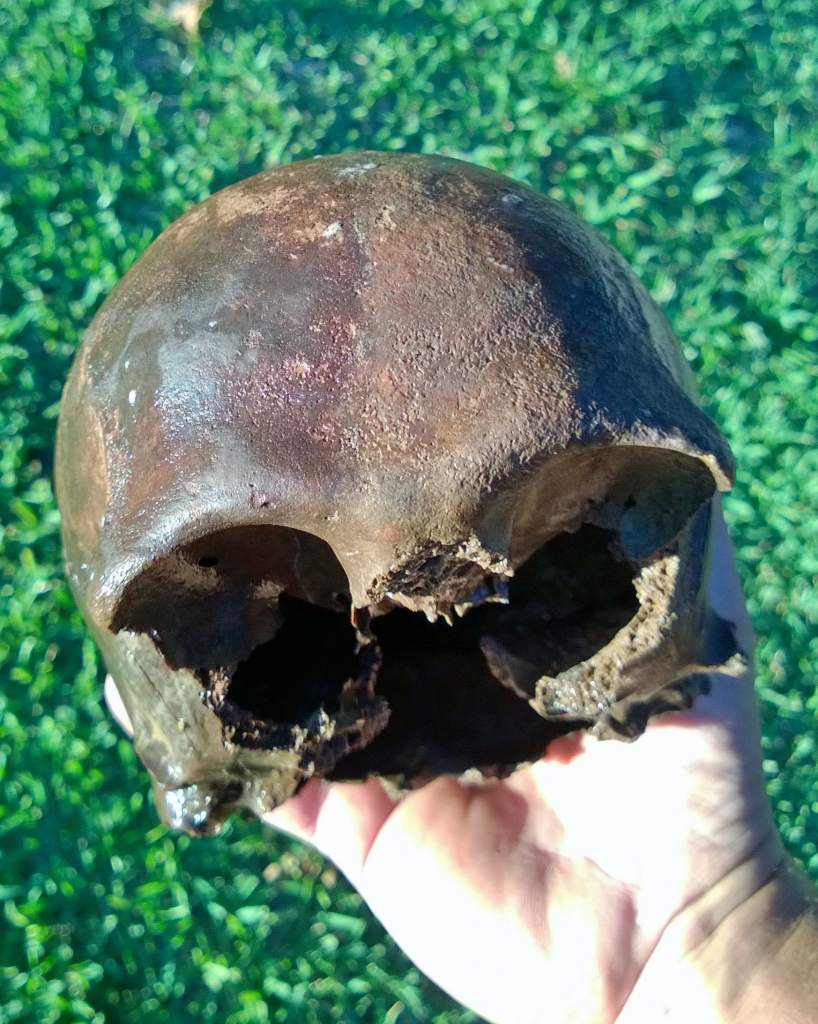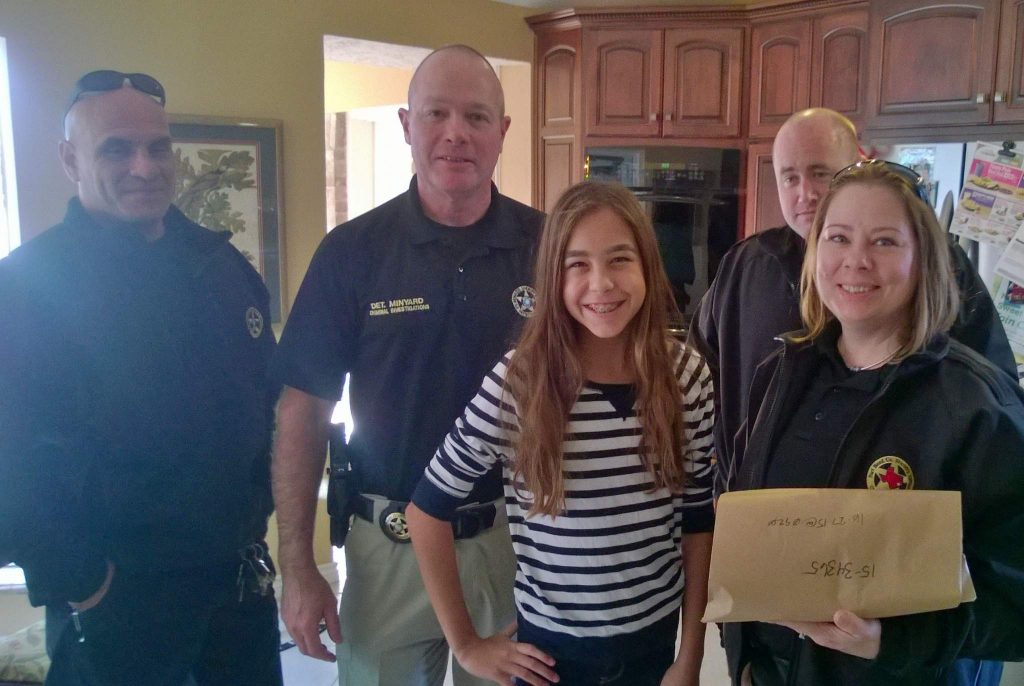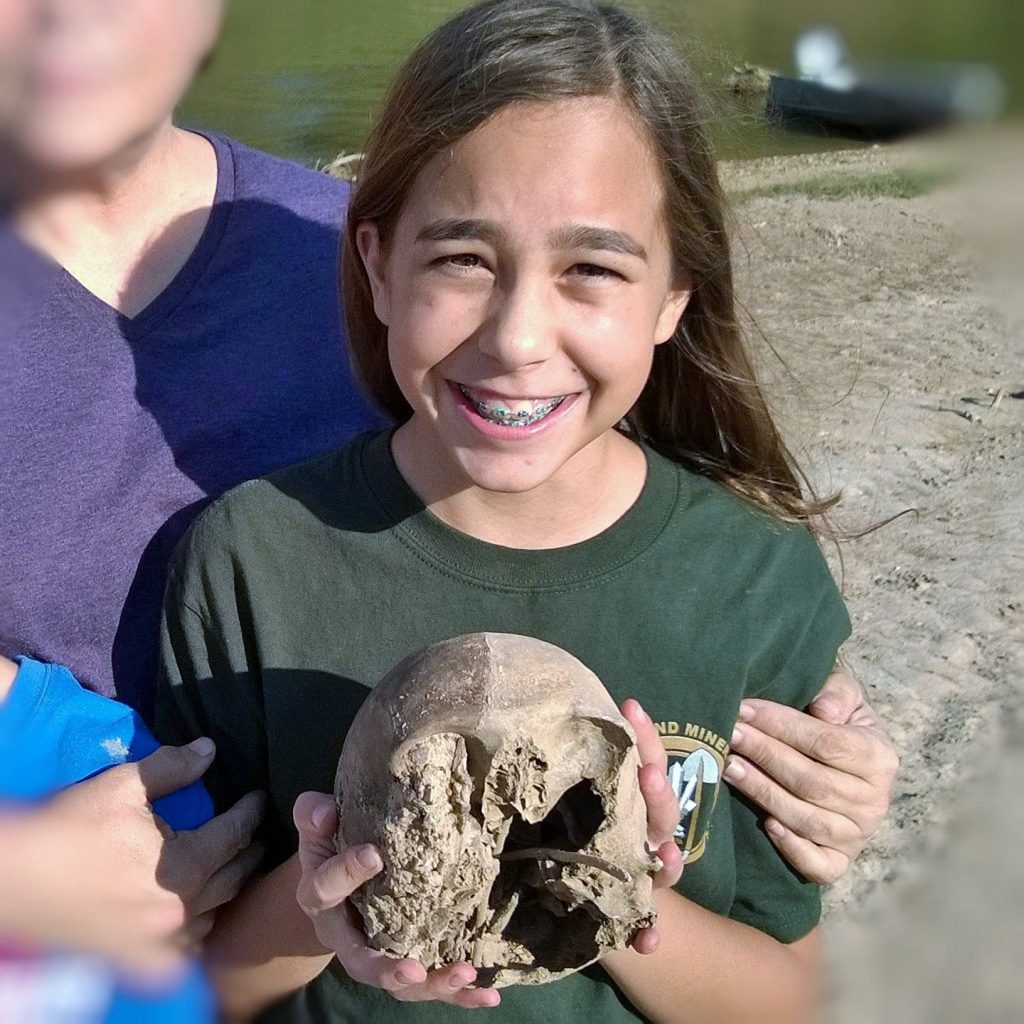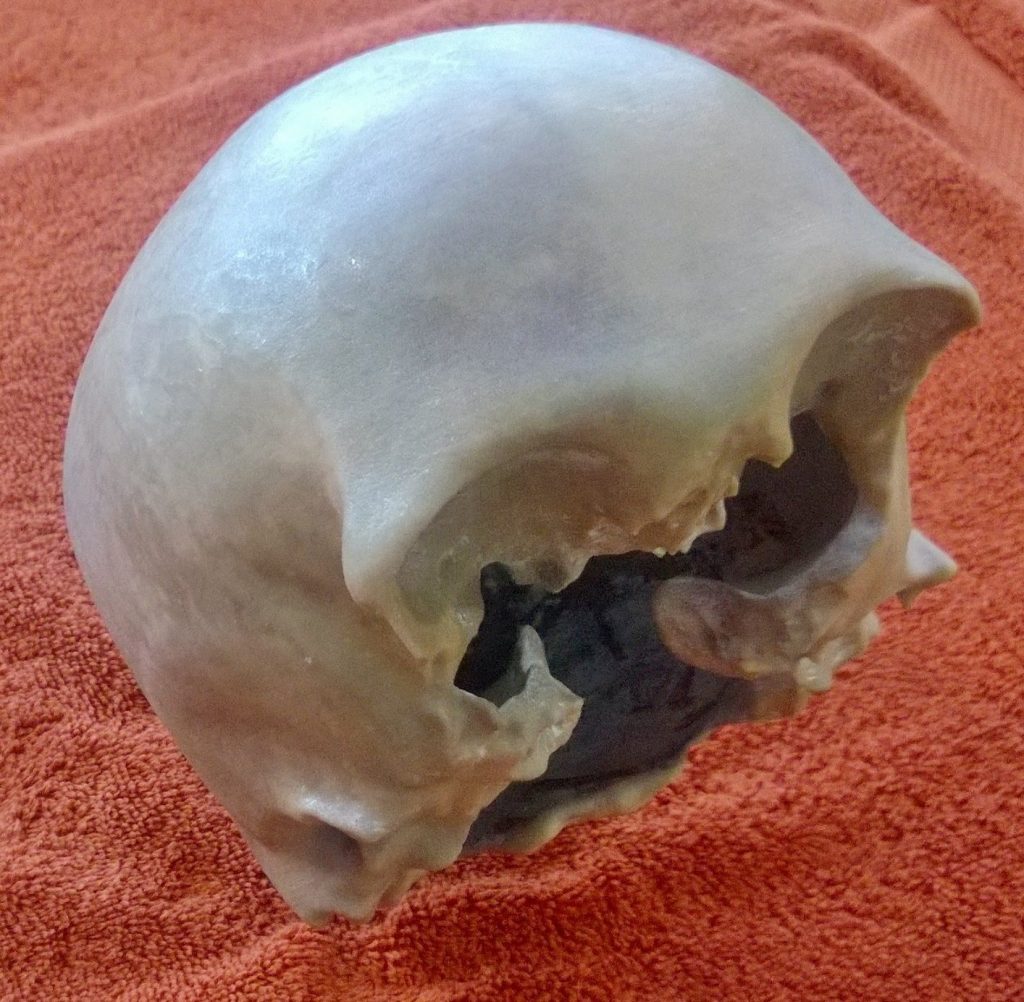Most 12 year olds have toys sitting on their shelves. Dolls, action figures, cars, trucks… I personally had loads of Lego. Lilly Garfinkel in Texas has a 3D printed human skull.

A forensic anthropologist in the making
In October 2015, Lilly Garfinkel was 12 years old and an avid fan of the Fox show “Bones” and especially a fan of the main character, Dr. Temperance Bones. If you are unfamiliar, the lead character played by Emily Deschanel is a forensic anthropologist whose specialty is to examine human remains to solve murder mysteries. Lilly’s family has a small ranch property that is adjacent to the Brazos River, a historic river that runs 840 miles through Texas. During the Pleistocene era it saw its share of now long extinct land mammals such as Giant Sloth, North American Camel, Bison, Mastodon and Mammoth. Many tens of thousands of years later, humans began inhabiting the banks of the river, and it was those remains that Lilly was after.
“Lilly would explore the Brazos following major floods — walking the sand and gravel banks looking for fossils. Typically prized finds would be sloth, camel and mammoth/mastodon. Bison were a more common find but still very cool item to find,” said Charles Garfinkel, Lilly’s father. “Regardless, any bone or fragment were treated with the enthusiasm it deserved as it was likely at least 10,000 years to 100,000 years old.”
Most of the rare human artifacts found along the Brazos were generally unearthed hundreds of miles north of where Lilly typically explored, but this didn’t stop her enthusiasm for the hunt.
“Lilly always insisted that one day she would find an early human skull along the river. She was very specific and I always tried to temper her expectations. But Lilly has always had the right mix of persistence and luck,” said Charles.
And in October 2015, that luck and persistence paid off.

A rare find
“We were on a large sand bank — the same bank we were on a week earlier. And almost immediately after exiting the boat, I recall her feverishly shouting “I found a human skull. I found a skull.” Even when I saw it, I still was not sure of what I was looking at but doubted it was a skull. I even thought that maybe this sand and mud covered object was just a discarded coconut. But when Lilly turned the object towards me, and I could see that it was staring back, I was floored. Lilly did it. She actually found an archaic skull. She soon named it “Joe Brazos.” She said she knew it as soon as the boat stopped. Even though it was partially buried with only the crown of the skull showing, she says she knew what it was. She has developed a great eye for fossil hunting over the years.”
After careful examination to ensure the skull didn’t belong to a recently deceased person, the Garfinkel’s discovered it was very old. Though the skull was missing much of the lower bones, there was still very much that could be determined.
“Lilly spent many long evenings detailing the skull, identifying missing bones, and learning the tell tale signs of determining the gender, age and ethnicity. She first determined that “Joe” was actually a “Josephine”. Lilly determined that Joe was not a child though the skull was very small compared to today’s typical adult. Joe was female and the skull had Asian/mongoloid features which made it clearly very early human inhabitants of the Americas who had crossed the ice bridge from Asia.”

Lilly prepared her findings along with the skull to submit to authorities. The Sheriff’s department picked up the skull where it was reviewed by the county’s forensic anthropologist, Dr. Joan Bytheway, at Sam Houston State in Huntsville, Texas. She confirmed that the skull was not of a recent era. Charles then contacted Peter Larson, a paleontologist from South Dakota, to ask what they could do to get the remains released from the county forensic examiner and into the hands of researchers who would have an interest. Larson put the Garfinkels in touch with Dr. Robert Bakker and David Temple, at the Houston Museum of Natural Science. Further assistance from Dr Rebecca Storey, a nationally renowned anthropologist at the University of Houston, revealed that the skull was 3,000 to 7,000 years old of a native American woman who died when she was in her 60’s (a rarity to live that long in that era).

Due to the nature of the find, the University of Houston sought guidance from their legal department who referred it to a county judge. The judge deemed that the skull should be provided to the Sugar Land, Texas branch of the Houston Museum of Natural Science (SMNS). The skull was further documented in order to construct the 3D image and print and then was transferred to SLMNS in June 2016 under the care of Dirk Van Tuerenhout Ph.D., Curator of Anthropology, HMNS.
A 3D printed memento
Charles Garfinkel wanted his daughter to have a record of her find, and contacted The 3D Printing Store.
“Charles explained that he needed to get the 3D scan completed right away since the county/museum was only allowing him to have the skull out of their possession for the day,” said Justin Finesilver, head of marketing and operations at The 3D Printing Store. “Charles felt that it would be amazing for Lilly to have a record of her find and he really wanted to figure out the best way to re-create the skull using 3D printing and 3D scanning.”
The team coached Charles through the photographic steps necessary in order for them to process the photos using their photogrammetry techniques. They then completed the file reconstruction from the photos before analyzing the model for printing. They used a Z Printer 450 to get the correct color finish, and spent 8 hours sanding and finishing the skulls.

“We think that this is another great story that helps explain how 3D printing is helping bridge the past, present and future. We know that 3D printing and scanning are being used all over the world to re-create fossils and ruins of past civilizations. We think that this story also encourages people of all ages to know that 3D printing can be used for so many things and that they should always ask about the capabilities of 3D printing before saying that their creation wouldn’t be possible.” said Finesilver.
“Throughout our project Charles and Lilly couldn’t believe how we were able to use this technology to re-create their fossil, and we want to make sure other similarly interested people know that the possibilities are there for this type of technology to help further their investigations, and be able to remake their finds.”
Featured image: The skull, found by Lilly Garfinkel. Image: Charles Garfinkel


